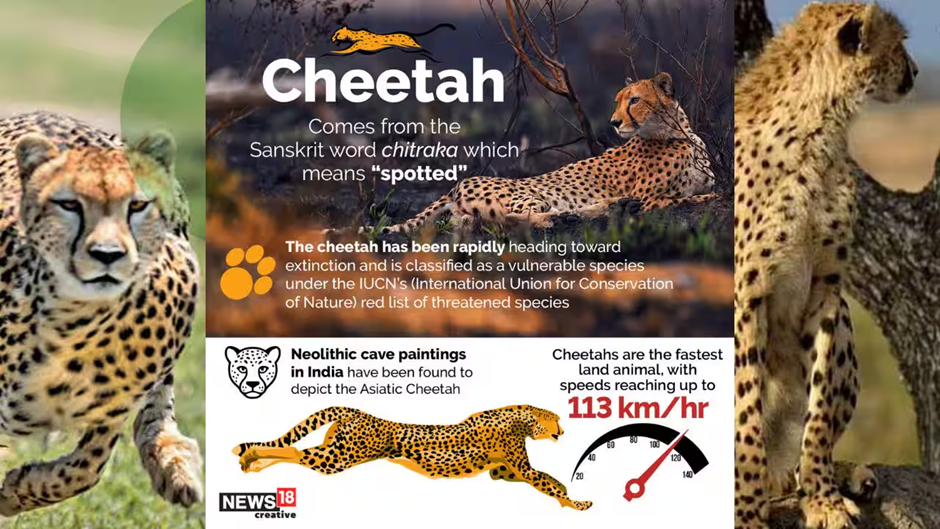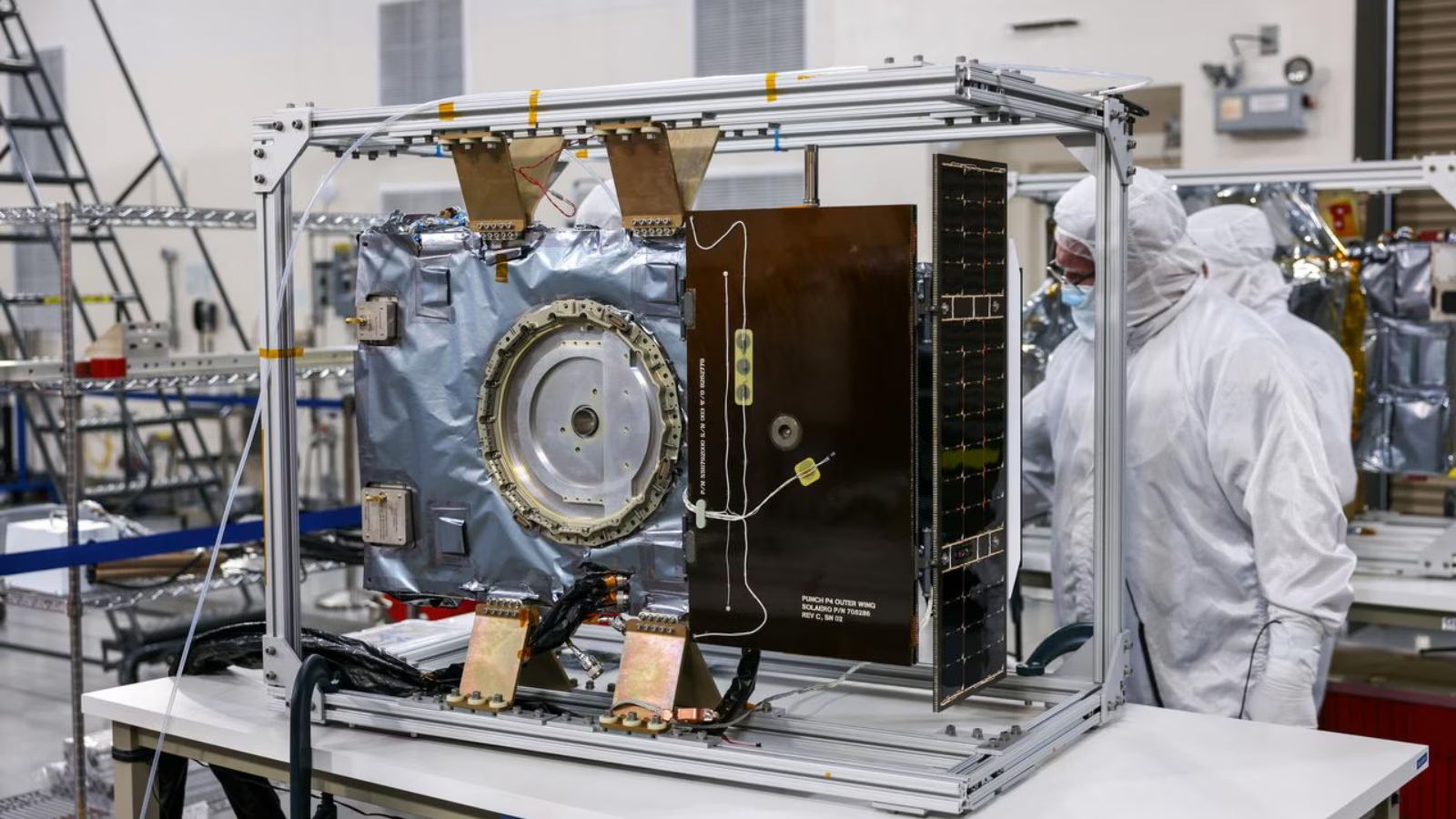- Courses
- GS Full Course 1 Year
- GS Full Course 2 Year
- GS Full Course 3 Year
- GS Full Course Till Selection
- CSAT
- 5 LAYERED ARJUNA Mentorship
- Public Administration Optional
- Online Program
- GS Recorded Course
- NCERT Batch
- Polity Module Course
- Geography Module Course
- Economy Module Course
- AMAC Module Course
- Modern India, Post Independence & World History Module Course
- Environment Module Course
- Governance Module Course
- Science & Tech. Module Course
- International Relations and Internal Security Module Course
- Disaster Management Module Course
- Ethics Module Course
- Essay Module Course
- Current Affairs Module Course
- ABOUT US
- OUR TOPPERS
- TEST SERIES
- FREE STUDY MATERIAL
- VIDEOS
- CONTACT US
Project Cheetah: Where things stand after two years
Project Cheetah: Where things stand after two years
30-09-2024

Project Cheetah completed two years on September 17. This ambitious project has two overarching objectives:
- Establish a stable, breeding population of cheetahs in central India.
- Use cheetahs as an umbrella species to restore open natural ecosystems such as scrubs, savannahs, grasslands, and degraded forests.
Current Status
- Surviving Cheetahs: Project Cheetah began with the translocation of 20 African cheetahs from Namibia and South Africa to Kuno National Park in Madhya Pradesh. Currently, 24 cheetahs (12 adults and 12 cubs) survive.
- Cubs Born: The translocated cheetahs led to the birth of 17 cubs, though 5 have perished due to various reasons, including attacks during mating and health complications.
Key Developments
- Initial Setup: The cheetahs were kept in soft-release bomas, small enclosures within the national park, allowing them to adapt to the local environment while hunting live prey.
- Next Batch: The next group of 6-8 African cheetahs will be translocated to the Gandhi Sagar Wildlife Sanctuary in Madhya Pradesh.
Challenges Faced
- Release Delays: Despite some successes, all 24 surviving cheetahs were put back in enclosures after the death of Pawan, raising questions about their capability to establish a habitat in the wild. Authorities state that more cheetahs will be released after the monsoon season.
- Conservation scientists criticize the delay, pointing out that large wild carnivores should not be kept in captivity for more than three months.
- All cheetahs, excluding Pawan and Veera, have been in enclosures for over a year, contrary to the government's own Cheetah Action Plan, which stated cheetahs would be released after a 4-5 week quarantine followed by a 1-2 month acclimatization period.
- Inadequate Prey Base: One of the biggest challenges facing the project is a deficit in the prey base. The latest annual report indicates that the density of chital, the primary prey for cheetahs, has declined from 23.43 animals per sq km in 2021 to 17.5 animals per sq km in 2024.
- The current chital population in Kuno is about 6,700, which is insufficient to sustain the 91 leopards and 12 adult cheetahs in the park. The leopard population would require about 23,600 prey animals, and cheetahs would need approximately 3,120 prey animals annually.
Recommendations
- Immediate Intervention: The annual report has prescribed immediate measures for prey augmentation at both Kuno and Gandhi Sagar.
- Landscape Conservation: Experiences from the project show that free-ranging cheetahs often ventured far and wide. Conservation of the interstate Kuno-Gandhi Sagar landscape, which includes protected areas and territorial forests across Madhya Pradesh and Rajasthan, is essential for establishing a population of 60-70 cheetahs. This will require effective prey management and coordination across states.
Future Directions
- The conservation of this landscape, which spreads across eight districts of Madhya Pradesh and seven districts of Rajasthan, will be a complex task involving habitat restoration and minimizing risks to cheetahs before they can effectively populate the area.
Conclusion
Project Cheetah has seen marginal successes over the past two years, particularly in breeding. However, significant challenges, including delays in reintroducing cheetahs to the wild and a declining prey base, threaten the long-term viability of the initiative. Continued efforts in prey management, habitat restoration, and effective interstate collaboration will be crucial for ensuring the project's success in establishing a sustainable cheetah population in India.




